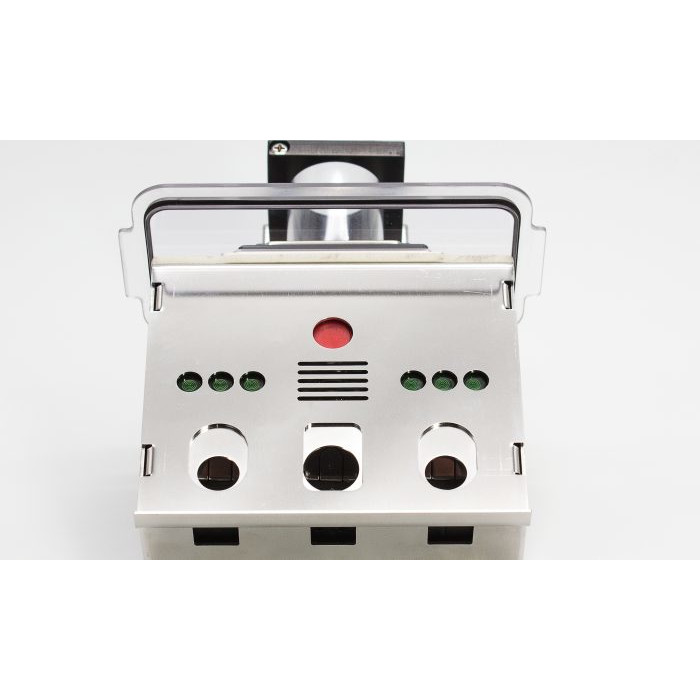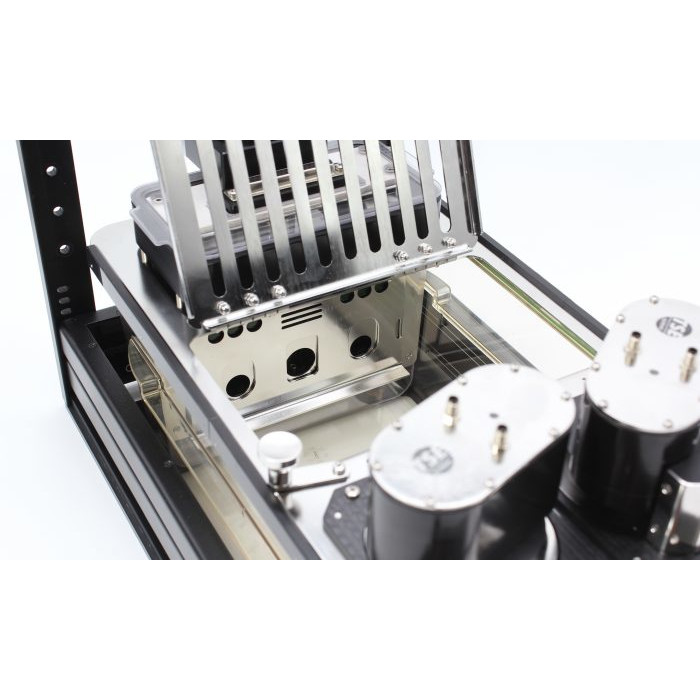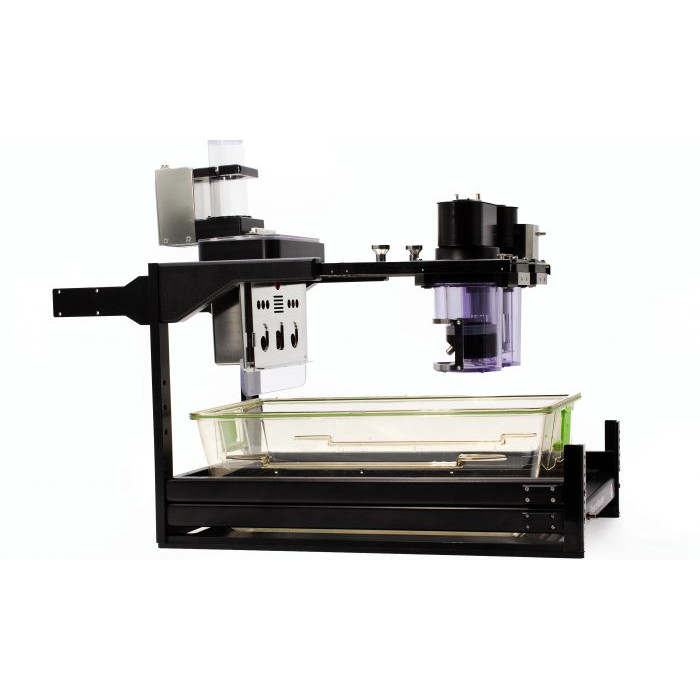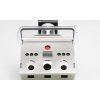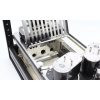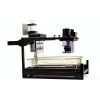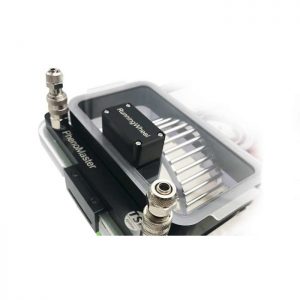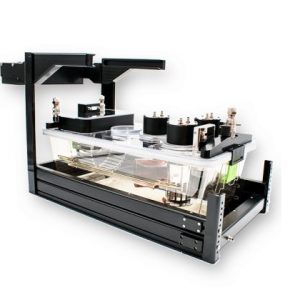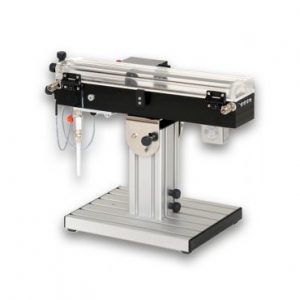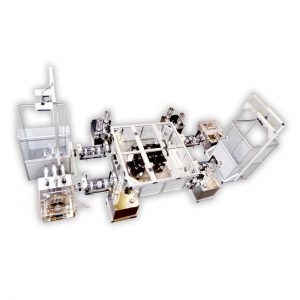Operant Wall
Operant Wall in The Home Cage
Product Enquiry
If you would like to send us an enquiry about this product, please click the button below, fill in the form and submit.
Product EnquiryOperant Wall
Operant Wall in The Home Cage
The TSE PhenoMaster system features the only integrated operant testing platform available on the market – the Operant Wall. Perform fully automated operant conditioning experiments without user interference – no stress for the animal that could interfere with learning performance and influence data output. The homecage setup allows long-term experiments with more trials per animal and facilitates circadian analysis of learning abilities. It also reduces the experimenter workload and saves laboratory space.
Operant Walls are available for rats and mice. They are configured from a variety of hardware modules such as levers, nose poke units, pellet, or liquid dispensers to meet the requirements of individual operant tasks. Whether you want to study motivation, attention, impulsivity, or run simple learning tasks – the system offers nearly unlimited flexibility in creating your Operant Conditioning experiments. The easy-to-use graphical user interface allows easy creation of custom protocols without the need for a programming background.
Interactive operation with other Phenomaster modules allows unprecedented flexibility in your experimental design. Use the Access Control Unit to restrict access to food before starting the operant test, therefore, increasing motivation to work for food. Combine an Operant Wall with a Voluntary Running Wheel to use wheel running as reinforcer or response element. The Operant Wall can even be integrated into a Calorimetry system.
Operant Wall setups can also be extended with components for optogenetic stimulation, fiber photometry, neural recordings, or infusion studies. TSE provides special cages/cage lids, Counterbalance arms, and TTL units for that purpose.
Features
- Cognitive testing in the home cage
- Minimal human interference
- Increased habituation and learning speed
- Long-term self-motivated learning
- Circadian screening of learning abilities
- Integration into a fully equipped PhenoMaster setup possible
- Customized test protocols with the powerful Operant Behavior software
- Reduced anxiety and stress level
Applications
- Cognitive Functions
- Phenotyping
Disease Models
- Alzheimer´s
- Huntington´s
- Diabetes & Obesity
Module of
Selected Publications
Sudakov S, Bogdanova N. Involvement of peripheral opioid receptors in the realization of food motivation into eating behavior. Front Behav Neurosci 2021; 14: 600920
Habermeyer J, Boyken J, Harrer J, Canneva F, Ratz V, Moceri S, Admard J, Casadei N, Jost G, Bäuerle T, Frenzel T, Schmitz C, Schütz G, Pietsch H, von Hörsten S. Comprehensive phenotyping revealed transient startle response reduction and histopathological gadolinium localization to perineuronal nets after gadodiam* administration in rats. Sci Rep 2020; 10(1): 22385
Delbès AS, Castel J, Denis RGP, Morel C, Quiñones M, Everard A, Cani PD, Massiera F, Luquet SH. Prebiotics Supplementation Impact on the Reinforcing and Motivational Aspect of Feeding. Front Endocrinol 2018; 9: 273
Plank AC, Canneva F, Raber KA, UrbachYK, Dobner J, Puchades M, Bjaalie JG, Gillmann C, Bäuerle T, Riess O, Nguyen HHP, von Hörsten S. Early Alterations in Operant Performance and Prominent Huntingtin Aggregation in a Congenic F344 Rat Line of the Classical CAGn51trunc Model of Huntington Disease. Front Neurosci 2018; 12: 11
Popova A, Tsvirkun D, Dolgov O, Anokhin K, Alberts J, Lagereva E, Custaud MA, Gauquelin-Koch G, Vinogradova O, Andreev-Andrievskiy A. Adaptation to a blood pressure telemetry system revealed by measures of activity, agility and operant learning in mice. J Pharmacol Toxicol Methods 2017; 85: 29-37
Selected Product Citations
Involvement of Peripheral Opioid Receptors in the Realization of Food Motivation Into Eating Behavior |
|
| Sergey Sudakov, Natalia Bogdanova | Front Behav Neurosci | Published 12 Jan 2021 |
| Article Snippet Experiments were performed using PhenoMaster modular equipment with an integrated operant wall (TSE Systems, Bad Homburg, Germany). One day prior to training, animals were subjected to 24-h food deprivation. Deprivation was carried out to speed up the training process, as we showed earlier (Chumakova et al., 2011 ; Sudakov et al., 2015 ). Training was performed in the tool chamber equipped with feeder, lever, and light stimulus. The two metal response levers were located 7.0 cm above the cage |
|
Prebiotics Supplementation Impact on the Reinforcing and Motivational Aspect of Feeding |
|
| Anne-Sophie Delbès, Julien Castel, Serge H. Luquet | Front Endocrinol Lausanne | Published 29 May 2018 |
| Article Snippet Analyses were performed in an automated online measurement system using high sensitivity feeding and drinking sensors and an infrared beam-based activity monitoring system (Phenomaster, TSE Systems GmbH, Bad Homburg, Germany). Mice were evaluated for food preference when exposed to HFHS and control chow diet (CTRL). Food preference was measured during six short sessions of 2 h (days 1–6) using animals as their own controls. |
|
Early Alterations in Operant Performance and Prominent Huntingtin Aggregation in a Congenic F344 Rat Line of the Classical CAGn51trunc Model of Huntington Disease |
|
| Anne-Christine Plank, Fabio Canneva, Stephan von Hörsten | Front Neurosci | Published 25 Jan 2018 |
| Article Snippet Experimental cohort 1 was repeatedly analyzed in the PhenoMaster System and in classical behavioral tests, which were selected on the basis of our previous work with SPRDtgHD rats (von Hörsten et al., 2003 ; Urbach et al., 2014 ). Cohort 2 underwent cognitive assessment in the automated operant conditioning system at the age of 3, 6, and 12 months. Cognitive, accelerod and social interaction tests were performed during the dark phase, while PPI and open field tests were performed during the |
|

